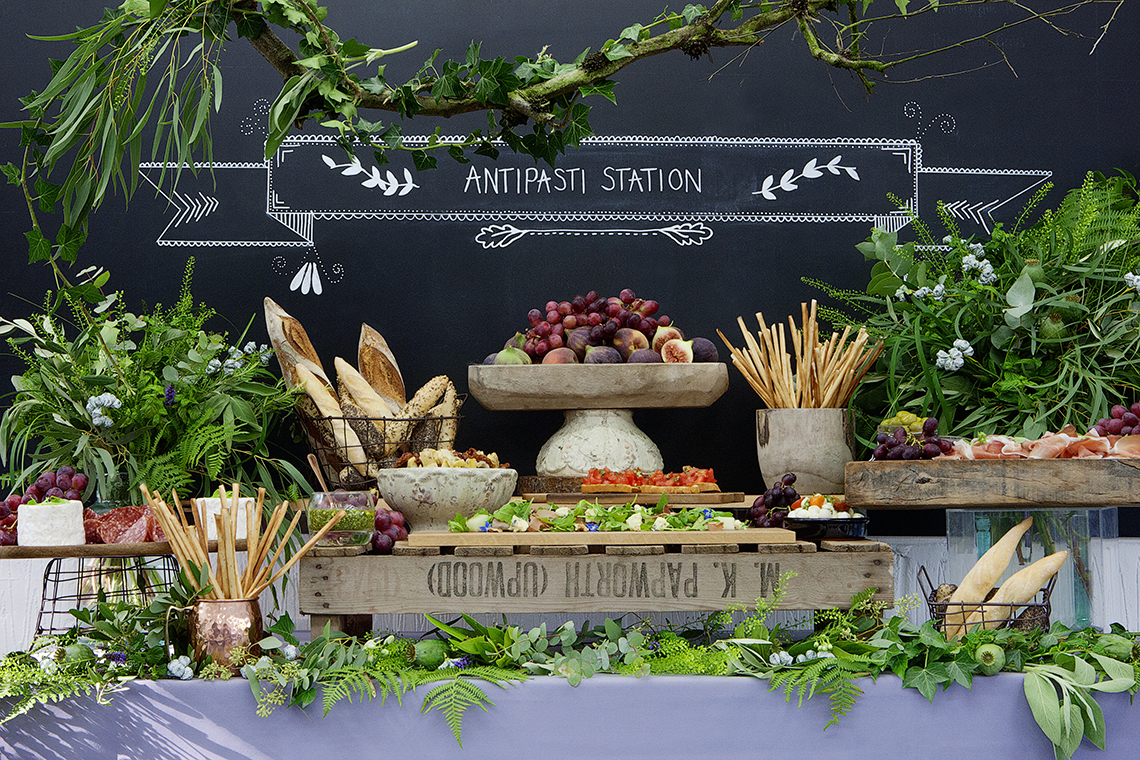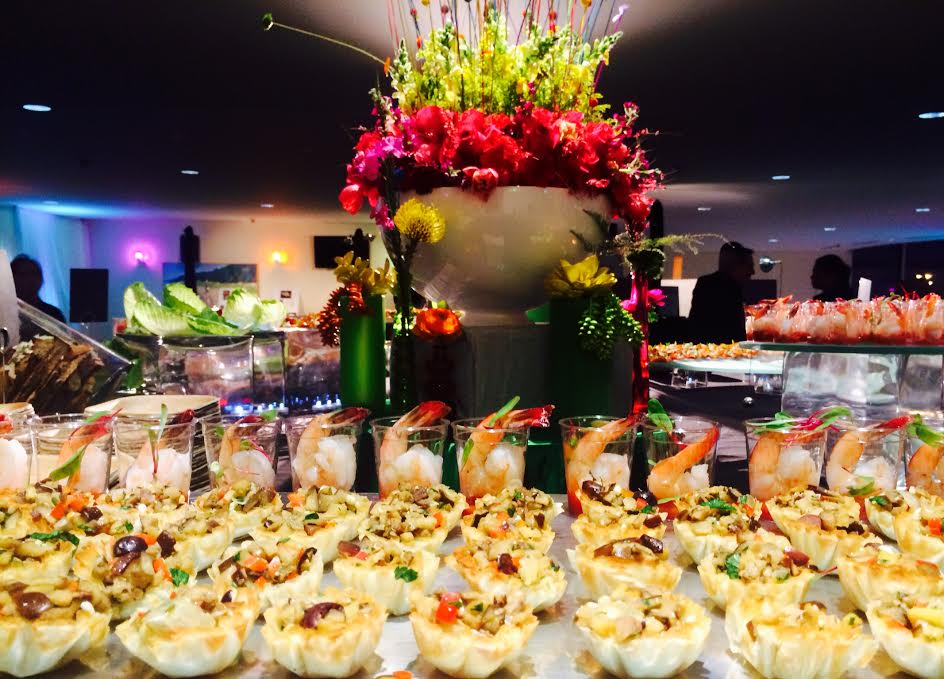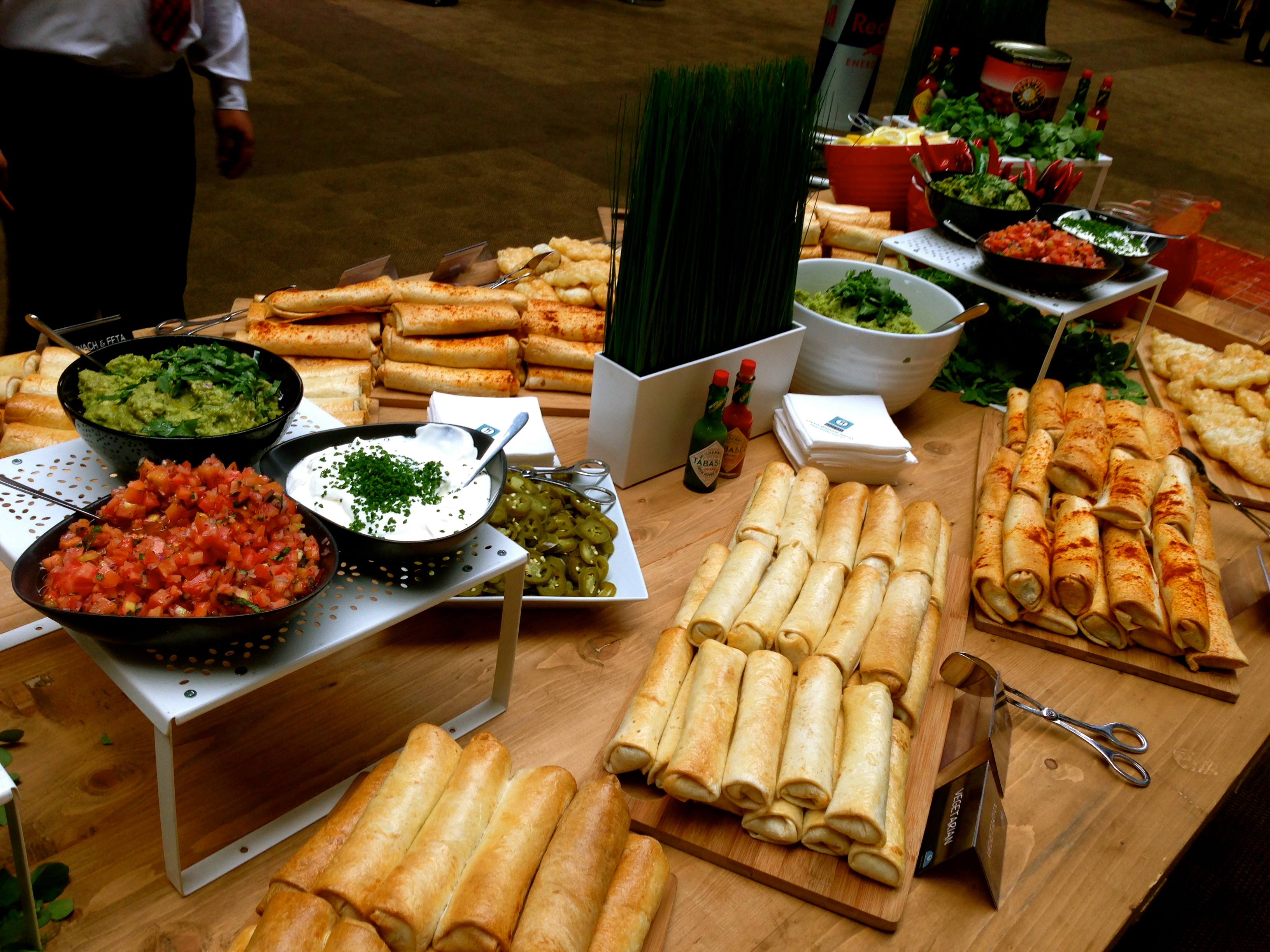Food stations, a captivating culinary concept, are revolutionizing dining experiences by offering an unparalleled blend of convenience, customization, and visual appeal. From lavish buffets to interactive action stations, these versatile food havens cater to diverse tastes and preferences, making them a staple in contemporary dining establishments.
Delve into the realm of food stations as we explore their multifaceted nature, encompassing planning, design, menu curation, staffing, marketing, and sustainable practices. Discover the secrets to creating unforgettable culinary journeys that tantalize taste buds and leave lasting impressions.
Food Station Concept

A food station is a dining concept that presents various dishes at designated areas within a larger dining space. Each station typically focuses on a specific cuisine, theme, or cooking style, offering guests a wide selection of options to choose from.
Food stations come in different types, each serving a distinct purpose:
Buffet Stations
Buffet stations allow guests to serve themselves from pre-prepared dishes arranged on tables or counters. This type of station is commonly found in casual dining settings, such as breakfast buffets or wedding receptions.
Action Stations
Action stations feature chefs cooking dishes to order in front of guests. This creates an interactive and engaging dining experience, often found in fine dining restaurants or special events.
Carving Stations, Food station
Carving stations specialize in slicing and serving large cuts of meat, such as prime rib or turkey. They are typically found in upscale restaurants and holiday feasts.
Food stations offer flexibility and customization, allowing guests to create their own meals and explore different flavors. They are a popular choice for events of all sizes, from intimate gatherings to large-scale celebrations.
Planning and Design
Planning and designing a food station requires careful consideration of several key elements to ensure efficient operations and a visually appealing experience. These include the menu, space, and equipment.
Menu Planning
The menu should align with the overall theme and cuisine of the event. Consider the dietary restrictions and preferences of the attendees to cater to a diverse audience. Plan the menu with a balance of popular and unique dishes to appeal to a wide range of tastes.
Space Optimization
Determine the available space for the food station and allocate it efficiently. Consider the flow of traffic, allowing ample space for guests to move around and interact with the station. Utilize vertical space with tiered displays or shelves to maximize storage and create a visually appealing presentation.
Equipment Selection and Arrangement
Select equipment that is appropriate for the menu and cooking methods required. Consider the size and capacity of the equipment to ensure it can handle the anticipated volume. Arrange the equipment in a logical and efficient manner, optimizing workflow and minimizing bottlenecks.
Food and Beverage Options
Food stations offer a diverse range of culinary delights, catering to various dietary preferences and palates. The selection of dishes should align with the event’s theme, ambiance, and target audience.
When selecting dishes for a food station menu, consider factors such as popularity, seasonality, dietary restrictions, and the availability of local ingredients. A well-rounded menu offers a balance of flavors, textures, and cuisines.
Visual Appeal and Diversity
The visual appeal of food displays is crucial for attracting guests and enhancing their dining experience. Chefs and food stylists employ creative techniques to showcase dishes in visually captivating ways.
- Color Contrast:Using dishes and garnishes with contrasting colors creates a vibrant and eye-catching display.
- Height and Dimension:Varying the height and shape of dishes adds depth and interest to the presentation.
- Texture Play:Combining dishes with different textures, such as crispy, creamy, and crunchy, adds visual and sensory variety.
- Garnishes and Sauces:Artfully placed garnishes and sauces not only enhance the flavor but also add visual appeal.
- Interactive Elements:Consider incorporating interactive elements, such as live cooking stations or self-serve beverage dispensers, to engage guests and create a memorable experience.
Staffing and Operations

Effective staffing and seamless operations are crucial for the success of any food station. This section delves into the roles and responsibilities of staff, best practices for efficient operations, and strategies for maintaining food safety and hygiene.
Roles and Responsibilities of Staff
The staff at a food station typically consists of a team of individuals with specific roles and responsibilities. These roles may include:
- Station Manager:Oversees the overall operations of the food station, ensuring efficient service and adherence to food safety standards.
- Cooks:Prepare and cook the food items offered at the station.
- Servers:Assist customers with ordering, provide food and beverage recommendations, and handle payments.
- Dishwashers:Maintain the cleanliness of the station, including washing and sanitizing dishes, utensils, and equipment.
Best Practices for Efficient Operations
To ensure smooth and efficient operations at a food station, several best practices should be followed:
- Clear Communication:Establish clear lines of communication between staff members to prevent misunderstandings and ensure timely execution of orders.
- Efficient Layout:Design the food station with an efficient layout that allows for smooth workflow and minimizes congestion.
- Adequate Staffing:Determine the optimal staffing levels based on the anticipated volume of customers and the complexity of the menu.
- Training and Development:Provide comprehensive training to staff on food preparation techniques, safety protocols, and customer service skills.
Food Safety and Hygiene
Maintaining food safety and hygiene is paramount at food stations to prevent foodborne illnesses and ensure the well-being of customers. Key strategies include:
- Proper Food Handling:Adhere to proper food handling practices, including using clean utensils, storing food at appropriate temperatures, and preventing cross-contamination.
- Regular Cleaning and Sanitization:Regularly clean and sanitize all surfaces, equipment, and utensils to eliminate bacteria and prevent contamination.
- Personal Hygiene:Staff must maintain proper personal hygiene, including wearing clean uniforms, washing hands frequently, and avoiding contact with food while sick.
- HACCP Implementation:Implement a Hazard Analysis and Critical Control Points (HACCP) system to identify and control potential food safety hazards.
Marketing and Promotion: Food Station
Effective marketing and promotional strategies are crucial for the success of food stations. Here are some key considerations:
To begin with, visually appealing promotional materials can captivate potential customers and entice them to visit your food station. High-quality photographs of mouthwatering dishes, creative graphics, and eye-catching designs can effectively showcase your culinary offerings and generate interest.
Social Media and Online Platforms
Social media platforms and online review sites provide valuable channels to connect with your target audience. Regularly post updates about your menu, share enticing images of your food, and engage with potential customers. Encourage positive reviews and testimonials, as they can serve as powerful social proof and build credibility.
Sustainability
Sustainability is a crucial aspect of modern food station operations. By embracing eco-friendly practices, we can reduce waste, conserve resources, and promote environmental responsibility.
To achieve sustainability, food stations can implement various measures, including:
Waste Reduction
- Using reusable or biodegradable packaging and utensils.
- Offering smaller portion sizes to minimize food waste.
- Implementing a composting system for organic waste.
Resource Conservation
- Selecting energy-efficient appliances and lighting.
- Using water-saving fixtures and practices.
- Sourcing ingredients from local and sustainable suppliers.
Environmental Responsibility
- Educating staff and customers about sustainable practices.
- Partnering with organizations promoting environmental stewardship.
- Adopting a zero-waste mindset and continuously seeking ways to improve sustainability.
Key Questions Answered
What are the different types of food stations?
Food stations come in various forms, including buffet stations, action stations where chefs prepare dishes on the spot, and carving stations specializing in slicing and serving meats.
How can I design an efficient food station layout?
Consider factors such as traffic flow, equipment placement, and accessibility to create a layout that optimizes functionality and minimizes congestion.
What are some creative food display ideas for food stations?
Elevate your food displays with tiered stands, colorful platters, and imaginative arrangements that showcase the culinary delights and entice diners.

